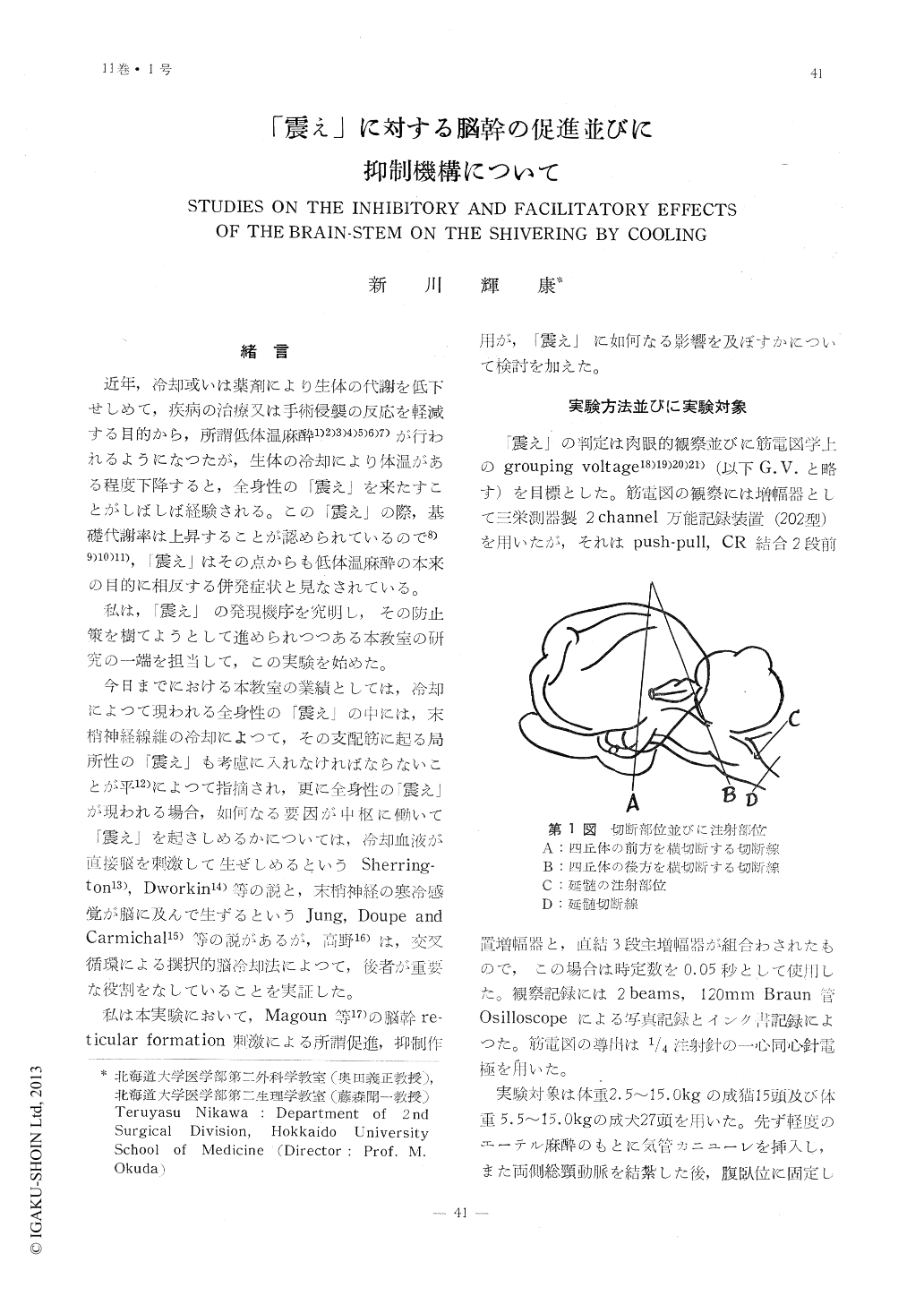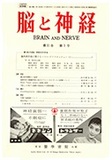Japanese
English
- 有料閲覧
- Abstract 文献概要
- 1ページ目 Look Inside
緒言
近年,冷却或いは薬剤により生体の代謝を低下せしめて,疾病の治療又は手術侵襲の反応を軽減する目的から,所謂低体温麻酔1)2)3)4)5)6)7)が行われるようになつたが,生体の冷却により体温がある程度下降すると,全身性の「震え」を来たすことがしばしば経験される。この「震え」の際,基礎代謝率は上昇することが認められているので8)9)10)11),「震え」はその点からも低体温麻酔の本来の目的に相反する併発症状と見なされている。
私は,「震え」の発現機序を究明し,その防止策を樹てようとして進められつつある本教室の研究の一端を担当して,この実験を始めた。
Experiments were conducted on 15 cats and 27 dogs in order to investigate the inhibitory and facilitatory effects of brain-stem reticular formation on the shivering elicited by the application of ice-bags on the body.
Shivering was observed by means of EMG of the m. deltoideus and m. biceps brachii,
1) Shivering still existed following pre-collicular decerebration, aithough it was weakened significatly.
2) Shivering disappeared after the transec-tion of the brain-stem at the postcollicular level.
3) In these cases, shivering reappeared following injection of 0.2cc of 1% xylocaine into the bulbar reticular formation bilaterally at the fossa rhomboidea.
4) The shivering of the above mentioned animals disappeared again following the tran section of the medulla.
5) Increase and decrease of shivering were observed respectively in the animals in which the facilitatory and inhibitory regions in the brain stem were stimulated.
From these results, it was concluced that the facilitatory as well as inhibitory regions exert their influences upon shivering by cooling.

Copyright © 1959, Igaku-Shoin Ltd. All rights reserved.


